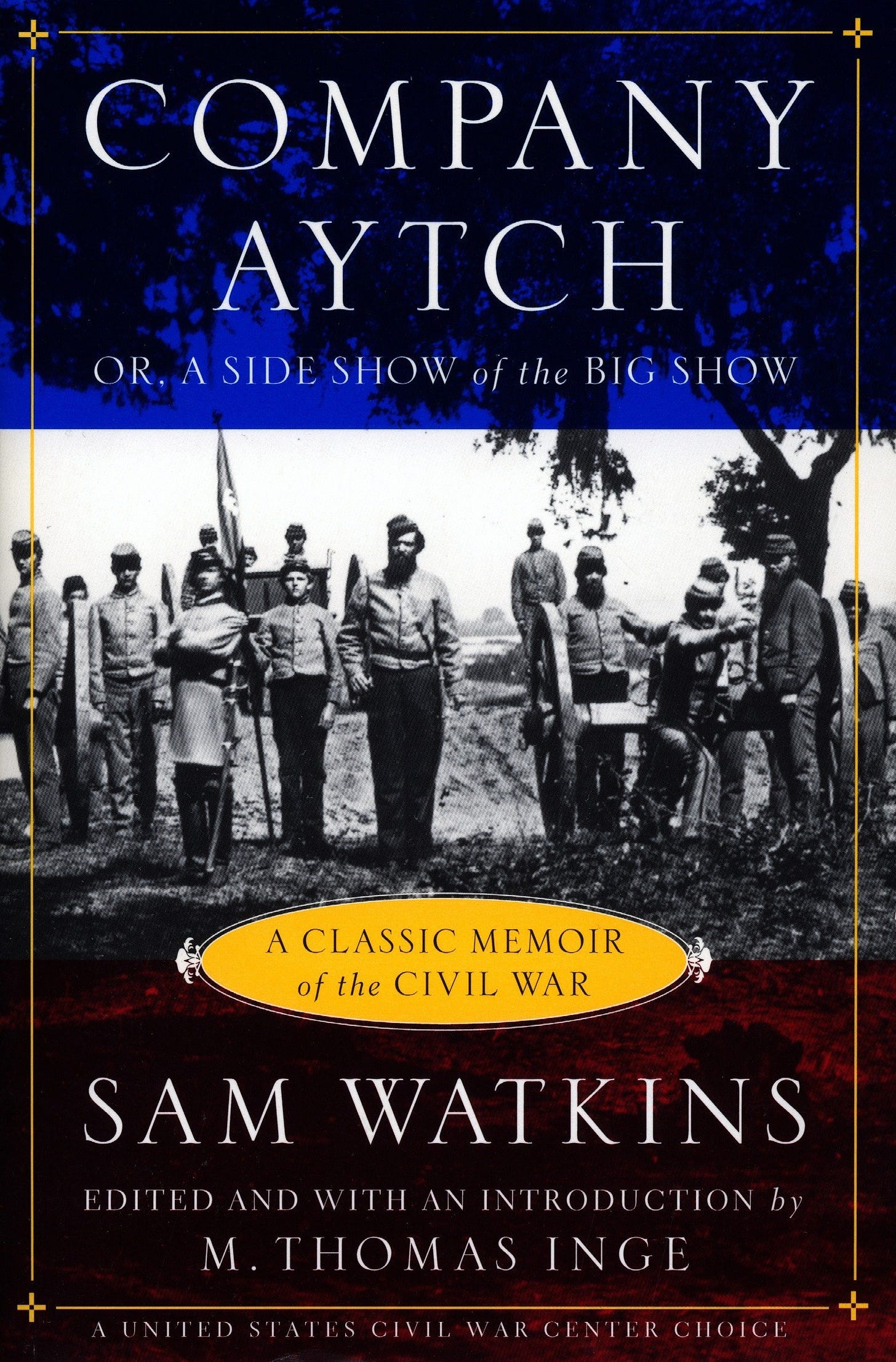Many of you have read or are familiar with Sam Watkins’s memoir, Co. Aytch: Maury Grays: Or, A Side Show of the Big Show. It is one of the most popular Confederate memoirs written by a common soldier. The book has gone through numerous printings and Watkins was featured prominently in Ken Burns’s Civil War documentary.
But as historian Patrick A. Lewis reminds us in the latest issue of The Journal of the Civil War Era [June 2022], the book must be read through the lens of historical memory rather than as a straightforward account of what happened.
Lewis situates Co. Aytch squarely within the Lost Cause. He explores both how Watkins framed his war experience as well as those those elements of his story that were either minimized, distorted or ignored altogether.
While Watkins rarely discussed the institution of slavery as a cause of secession, Lewis demonstrates that it was “pervasive” in Maury County, Tennesse, where he lived. He clerked for and boarded with a slaveowner in Columbia. Closer to home, his father was one of the wealthiest men in the county, who owned 109 slaves in 1860. None of this is shared with readers in the memoir.
Contrary to the portrayal of the company as disconnected to the institution of slavery, the Maury Grays “included ten others whose families were of planter status, owning more than twenty slaves. Twenty-seven other members of the company lived in slave-owning families.” All told, roughly half of the 108 members of the company had a direct connection to slavery.
Company H was not the band of yeoman brothers that Watkins made it out to be.
Lewis also challenges Watkins’s portrayal of his company and the First Tennessee as having sacrificed everything on “altar of Confederate independence.” Contrary to the Lost Cause’s emphasis on unqualified duty and sacrifice, Lewis found plenty of examples of desertion, discharges based on the Conscription Act, and transfers or promotions into safer or “bombproof positions.” Rather than read class resentment and yeoman pride into Co. Aytch, Lewis suggests that, “Watkins felt slighted at remaining int the ranks when so many of the men with whom he had enlsited in 1861—social peers from the highest echelons of Middle Tennessee slave society—left him behind and rose to the highest military ranks with which their social status corresponded.” (p. 186)
Apart from one brief reference, the most telling absence in Watkins’s memoir is that of his body servant or camp slave, named Sanker. This is a wonderful example of Watkins’s selective memory and the influence of the Lost Cause. While most former Confederates waxed poetic about their camp slaves, we must consider the possibility that most just simply didn’t want to discuss the subject. The implications—as I have recently suggested—is that we have lost sight of the extent to which enslaved labor made it possible for Confederate armies to function.
The men like Sanker, who have had their voices written out of history, public history, and American memory, must be found and discussed—in classrooms, at historic sites, and online. We must talk not only about who they were but also why we have not known about them for so long, why they were silenced, and what that has done to our understanding of our past and present. (p. 194)
Lewis closes with a powerful argument as to why enslaved men like Sanker need to be muc more visible on our Civil War battlefields.
But Sanker was there too, an inescapable fact that undercuts the neo-segregationist goals of those who insist on interpreting only “WHAT happened” on the battlefield. If it matters that Sam Watkins was there, why doesn’t it matter that Sanker was there? If Watkins could assert that his story had the same right to be told that those of colonels and generals did, doesn’t Sanker’s story deserve the same? If slavery was present on the battlefield must we not, then, talk about slavery? Park interpreters and visitors followed in Watkins’s footseps by imagining and inhabiting a battlefield, physically and temporally cut off from the past and the present by a wall of stacked rail fences. Sanker, though, shows how artificial and permeable those boundaries are. (p. 196)
This is one of those essays I wish I had while I was writing my Black Confederates book. Beyond that, it is an important reminder that Confederate monuments are not the only impediment to helping visitors think beyond the Lost Cause, both in terms of the experience of the rank and file and the importance of slavery.
Thank to Patrick Lewis for a fabulous essay.





"we have lost sight of the extent to which enslaved labor made it possible for Confederate armies to function"
I wonder how long it took for society to lose sight of it? Did it happen immediately to those located far from the battlefields? Did it take a couple of generations of Lost Cause myth dissemination?
I was born and raised in Maine. My parents were originally from Ft Edward & Hudson Falls NY, so we of course made the requisite annual pilgrimage to Ticonderoga and Ft. William Henry. Much revolutionary war history, very little Civil War. As an adult, I spent 8 years in northern VA and was obsessed with the battlefields and museums, visiting at every opportunity. Soaked in the Lost Cause and the 'honorable gentleman' image of Lee without even realizing it. Not a single mention of slavery other than the obvious recognition of the institution and emancipation. Certainly not of their participation in the CSA. I know I said it before, but I am thankful for your research that enlightens us all.
I have a copy of Co. Aytch on my Kindle bookshelf. Haven't read it yet, but will keep this article in mind whenever it hits my reading list. Thanks.